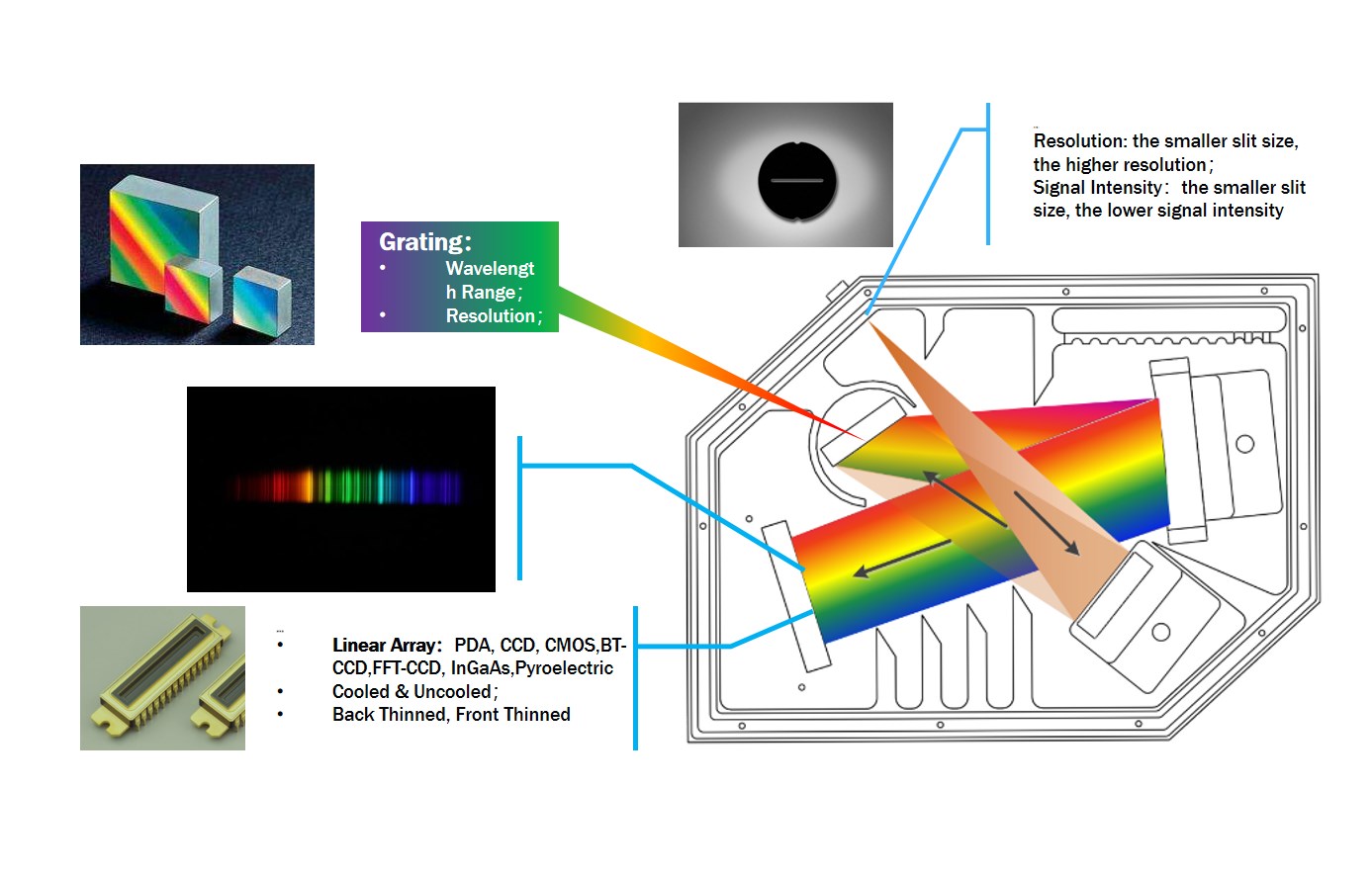Your shopping cart is empty!
Do You Really Know about Modular Spectrometer?
From analyzing chemical reactions to maintaining stable optical fiber links, their applications are vast and impactful. Embrace the future of precise spectral analysis!
As an important tool in modern spectral analysis technology, modular spectrometers are widely used in various fields, from scientific research to industry, to medical care and communications. Optosky will introduce to you in detail the working principle of modular spectrometer and its application in various fields.
Introduction
A spectrometer is an instrument used to analyze spectral distribution. It combines fiber optics technology and spectral analysis technology to accurately measure the intensity distribution of light at different wavelengths. Spectrometers are used in a wide range of applications, from scientific research to industrial production, environmental monitoring, material analysis and other fields. The basic principle of the spectrometer is that after the polychromatic light passes through the slit, it is incident on the grating through the collimating mirror. Due to the dispersion effect of the blazed grating, the polychromatic light will be spatially separated/spread according to different wavelengths, and finally focused and imaged on the online detector. different pixel positions. Through calibration, information such as the wavelength component of the corresponding pixel and the intensity of each wavelength can be obtained.
Working principle
The core components of modular spectrometer include optical fiber, grating, photodetector and data processing system. Here's working principle:
- Optical signal collection: The optical signal to be measured is transmitted to the spectrometer through optical fiber.
- Optical signal spectroscopy: After the optical signal passes through the collimating mirror, it is decomposed into light of different wavelengths by the grating.
- Optical signal detection: The decomposed optical signal is focused by the focusing lens onto the photodetector, and different wavelengths of light correspond to different positions on the detector.
- Data processing: The photodetector converts the optical signal into an electrical signal and transmits it to the data processing system for analysis, and finally obtains the spectrum and related data.
Application
- Scientific research: In basic scientific research such as chemistry, physics, biology, etc., modular spectrometers are widely used to analyze the composition and structure of substances. For example, modular spectrometers can be used to accurately measure the absorption spectra of molecules and study dynamic changes during chemical reactions.
- Industrial detection: Modular spectrometers are used for online monitoring and quality control in industrial production. For example, during the semiconductor manufacturing process, the content of pollutants in the production environment can be monitored in real time to ensure product quality.
- Environmental monitoring: Modular spectrometers are used to detect pollutants in the atmosphere, water quality and soil. For example, by measuring the spectrum of nitrogen dioxide in the atmosphere, air quality can be assessed and help formulate environmental policies.
- Medical Diagnostics: Modular spectrometers are used in the medical field for non-invasive diagnosis and biomedical research. For example, by measuring the spectrum of skin tissue, skin lesions and cancer can be detected, providing evidence for early diagnosis and treatment.
- Communication field: In optical fiber communication systems, modular spectrometers are used to monitor the transmission quality of optical fiber links, detect signal attenuation and optical fiber loss, and ensure the stable operation of the communication system.
Summary
As an advanced spectral analysis tool, modular spectrometer has shown great application potential in various fields due to its high precision and versatility. Understanding the working principles and applications of modular spectrometers can not only help us make better use of this tool, but also promote the development and innovation of related technologies.
Search
Categories
Popular Posts
Latest Posts




















Comments: 0
No comments